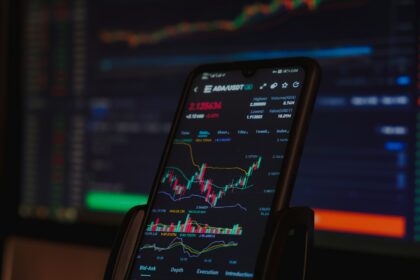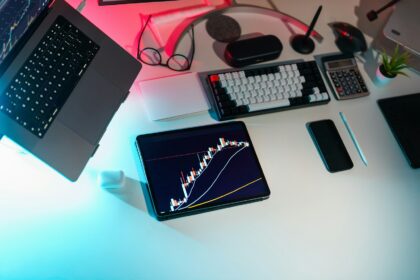The balance between anxiety and euphoria significantly influences cryptocurrency valuation shifts. Utilizing the Fear and Greed Index provides traders with a quantifiable gauge of prevailing emotion, helping to anticipate potential reversals or continuation in price trends. When fear dominates, market participants often sell prematurely; conversely, excessive enthusiasm can signal overbought conditions prone to correction.
Sentiment analysis extends beyond raw data by incorporating psychological patterns that affect decision-making processes. Recognizing how collective mood swings impact asset volatility enables more informed entry and exit strategies. For example, abrupt spikes in greed may coincide with unsustainable rallies fueled by speculative behavior rather than fundamental value.
Integrating emotional metrics into technical frameworks enhances risk management by revealing behavioral biases that standard indicators might overlook. Traders who acknowledge the interplay between mindset and price action can reduce impulsive reactions during turbulent periods. Tracking shifts within the index allows for calibrated responses aligned with broader crowd psychology instead of isolated price signals.
Crypto Fear and Greed: Market Sentiment
Understanding the emotional drivers behind asset price fluctuations is critical for effective trading strategies. The interplay between apprehension and avarice significantly influences decision-making processes in financial environments. This dynamic can be quantified using specialized metrics such as sentiment indices, which aggregate data from various sources to reflect prevailing psychological states among participants.
The sentiment index typically combines factors including volatility, momentum, social media activity, and market volume to gauge collective emotions. High levels of avarice often correlate with elevated prices and increased trading volumes, while intense apprehension may signal potential downturns or consolidation phases. Traders leveraging these insights can identify periods of irrational exuberance or excessive pessimism to optimize entry and exit points.
Emotional Indicators and Their Impact on Price Movements
Emotions like anxiety and eagerness manifest distinctly within trading patterns. For instance, during episodes of exuberance, investors might overlook fundamental risks, leading to inflated valuations. Conversely, widespread anxiety can trigger sell-offs disproportionate to actual market conditions. A notable case study occurred during the 2017 bull run when rapid price increases were followed by sharp corrections fueled by panic selling.
Monitoring an emotion-driven index allows traders to anticipate potential reversals. When the index reaches extreme values indicating overwhelming optimism or pessimism, contrarian strategies often prove successful. Utilizing technical analysis alongside psychological metrics enhances accuracy in predicting trend shifts.
- Example: In March 2020, a surge in apprehension due to global economic uncertainty caused abrupt price drops across multiple assets.
- Counterpoint: Subsequent recovery was propelled by renewed eagerness as confidence returned with stimulus announcements.
An essential aspect is recognizing that emotional responses are not isolated but influenced by external stimuli such as news releases, regulatory changes, or technological developments. Integrating sentiment data with fundamental analysis provides a more comprehensive understanding of market dynamics.
The psychology behind investment choices reveals predictable behavioral patterns that can be systematically tracked through indices reflecting collective emotional states. Developing proficiency in interpreting these measures enables both novice and experienced traders to enhance risk management protocols and capitalize on market inefficiencies with greater confidence.
How Fear And Greed Index Works
The Fear and Greed Index quantifies the prevailing emotional state of participants in the cryptocurrency trading environment by assigning a numerical value that reflects levels of caution or excessive optimism. This index aggregates multiple data sources such as volatility, trading volume, social media trends, and dominance metrics to produce a comprehensive indicator that helps gauge whether investors are inclined toward risk aversion or speculative enthusiasm.
By tracking fluctuations in this composite measure, traders can identify potential turning points in asset valuation cycles. For instance, extremely low readings suggest widespread apprehension among market actors, often coinciding with undervaluation phases, whereas elevated scores indicate euphoria that may precede corrective movements. Understanding these patterns allows for more informed decision-making based on collective behavioral tendencies rather than isolated technical signals.
Components Behind The Index Calculation
The index synthesizes seven distinct inputs to capture diverse facets influencing trader psychology:
- Volatility: Measures deviations from average price ranges; increased turbulence corresponds with heightened nervousness.
- Momentum/Volume: Compares current transaction volumes against historical averages; surges often signify growing bullish sentiment.
- Social Media Analysis: Tracks frequency and intensity of positive versus negative mentions across platforms to assess public mood.
- Surveys: Gathers direct feedback from retail participants regarding their outlooks.
- Dominance Metrics: Examines the market share held by leading cryptocurrencies as a proxy for investor confidence shifts.
- Price Strength: Evaluates recent gains or losses relative to longer-term trends.
- Safe Haven Demand: Observes capital flows into defensive assets when uncertainty prevails.
The weighted integration of these variables results in an index value ranging typically between 0 (extreme caution) and 100 (extreme optimism). Such multidimensional assessment mitigates biases that might arise if relying solely on price action or volume data alone.
Practical Applications For Traders
This tool aids both short-term speculators and long-term investors by highlighting emotional extremes within the ecosystem. For example, during periods where the index registers below 20 points, contrarian strategies might be favored since excessive worry could signal oversold conditions ripe for rebounds. Conversely, readings above 80 may prompt caution or profit-taking due to inflated expectations potentially leading to corrections.
A notable case study occurred during mid-2021 when the index peaked near historic highs amid rapid appreciation driven by retail frenzy and social hype. Subsequent retracements confirmed warnings suggested by unsustainable exuberance indicated through the metric’s elevated score. Traders incorporating this insight alongside fundamental analysis managed risk more effectively during volatile episodes.
Caveats And Limitations To Consider
No single indicator perfectly predicts future price dynamics; this index is no exception. Its reliance on aggregated sentiment means occasional false signals occur, especially during external shocks unrelated directly to investor psychology–such as regulatory announcements or technological disruptions. Additionally, automated bots inflating social metrics can distort genuine public opinion representation temporarily.
An understanding of its contextual use enhances effectiveness: combining the index with traditional charting tools like moving averages or RSI provides balanced perspectives rather than standalone guidance. Monitoring shifts over consecutive days also helps discern sustained trends from transient spikes influenced by news cycles or viral events.
Evolving Methodologies And Data Sources
The methodology behind this measurement continues adapting through incorporation of machine learning algorithms analyzing natural language processing outputs from forums and message boards relevant to blockchain ecosystems. Such advancements aim to refine sensitivity toward subtle shifts in collective behavior patterns beyond simple keyword counts or volume surges.
This structured approach enables a nuanced understanding that transcends simplistic bullish/bearish classifications, providing actionable intelligence grounded in quantitative evidence combined with psychological insights embedded within trading ecosystems..
Using Sentiment To Time Trades
Successful trading often hinges on recognizing shifts in collective psychology reflected through specific indicators. An index measuring emotional extremes–ranging from panic to euphoria–can signal optimal entry or exit points. For instance, when the index indicates excessive fear, prices tend to be undervalued, presenting buying opportunities. Conversely, heightened enthusiasm commonly precedes market corrections, suggesting caution or profit-taking.
Integrating this psychological data with technical analysis enhances decision-making precision. Traders who monitor fluctuations in emotion-driven metrics alongside volume and trend patterns can better anticipate reversals. For example, during a sustained upward trend paired with rising optimism levels, one might expect continued strength until sentiment reaches unsustainable highs. Recognizing these signals early allows for timely adjustments in position sizing or stop-loss placements.
Mechanisms Behind Emotional Influence in Trading
The oscillation between anxiety and excessive confidence among participants directly impacts price dynamics. This phenomenon is quantifiable via composite indexes aggregating social media chatter, volatility measures, and transaction flows. A notable case occurred in late 2020 when a spike in euphoric indicators coincided with a sharp pullback following rapid gains. By systematically tracking these sentiment shifts, traders avoid common pitfalls driven by herd mentality.
Practical application involves establishing thresholds within an emotion-based index to trigger alerts. For example:
- Low sentiment values: Signal potential accumulation zones suitable for initiating long positions.
- High sentiment values: Warn against entering new trades at inflated prices or suggest reducing exposure.
This approach demands continuous monitoring but offers a quantitative framework to harness psychological trends effectively without succumbing to impulsive reactions.
Interpreting Extreme Market Emotions
When trading digital assets, recognizing intense emotional states like excessive greed or overwhelming anxiety is essential for making informed decisions. An index measuring these sentiments can reveal when optimism or pessimism reaches unsustainable levels, often preceding significant price corrections. For example, a sentiment index reading above 80 typically signals overenthusiasm that might lead to a pullback, while values below 20 suggest widespread concern and potential buying opportunities.
Such emotional extremes influence trader behavior profoundly. Elevated confidence drives aggressive buying strategies, pushing prices beyond intrinsic value. Conversely, heightened apprehension leads to rapid sell-offs as participants rush to reduce exposure. Understanding these cycles requires analyzing not only the sentiment index but also volume trends and volatility metrics to validate whether emotions are driving irrational market moves.
Technical Indicators and Emotional Analysis
A comprehensive approach combines quantitative tools with behavioral insights. The Fear & Greed Index aggregates factors like volatility, momentum, social media activity, and surveys to quantify prevailing attitudes among investors. For instance, during periods of extreme exuberance reflected by elevated index scores near 90, historical data shows an increased likelihood of short-term reversals due to profit-taking and risk aversion emerging suddenly.
Conversely, severely low readings correspond to capitulation phases where selling pressure exhausts itself. Case studies from previous market cycles illustrate how following such signals allowed traders to enter positions at discounted valuations before subsequent recoveries. One notable example is the 2018 downturn when the index dipped below 10 multiple times; patient investors who monitored this indicator identified optimal entry points despite overall negative headlines.
Practical application involves integrating emotion-based indices with traditional technical analysis tools like Relative Strength Index (RSI) or Moving Average Convergence Divergence (MACD). When the sentiment gauge indicates extreme enthusiasm alongside RSI values above 70 in a major asset, caution is warranted as these combined signals often precede retracements. Similarly, low sentiment paired with oversold RSI conditions may highlight undervalued opportunities backed by measurable buying interest resumption.
Ultimately, interpreting heightened emotional states requires balancing quantitative data with contextual understanding of ongoing events influencing trader psychology. Awareness of typical patterns associated with exuberance or despair provides a framework for managing risk effectively and timing trades more strategically. Educating oneself about how these psychological drivers manifest through measurable indicators cultivates discipline and confidence necessary for navigating complex trading environments successfully.
Limitations Of Sentiment Indicators
Relying solely on psychological measures like the fear and greed index to guide trading decisions can lead to misinterpretations of underlying asset value and momentum. These tools quantify collective emotional bias but lack precision in differentiating between transient hype and sustainable trends, resulting in potential false signals during high volatility periods.
For example, during sudden price spikes driven by speculative behavior, sentiment indexes often spike sharply towards extreme optimism. However, this does not always align with fundamental shifts or technical confirmations, making it risky to base entry or exit points purely on these metrics. Integrating volume analysis and on-chain data can improve contextual accuracy when assessing such emotional extremes.
Key Technical Insights and Future Directions
- Psychological indicators measure perception, not fundamentals: Emotional biases captured by these indexes reflect crowd psychology but omit critical factors like liquidity flows or macroeconomic variables influencing asset valuation.
- Lagging nature reduces predictive power: Sentiment often reacts after significant price moves rather than forecasting them, limiting its utility as a standalone timing tool for trades.
- Differentiation between short-term noise and structural shifts: Advanced algorithms incorporating machine learning may help distinguish momentary emotional surges from lasting behavioral changes impacting valuation.
- Combining multiple data layers enhances robustness: Cross-referencing sentiment scores with order book depth, derivative positioning, and network activity increases signal reliability and reduces false positives.
Moving forward, development of hybrid analytical frameworks that integrate emotional indices with quantitative market data will be essential. Such multi-dimensional approaches can better capture the complex interplay between human psychology and transactional realities shaping asset trajectories. This evolution promises more nuanced risk management strategies capable of adapting to fluctuating appetites for risk and caution within trading communities worldwide.
In conclusion, while indexes reflecting collective enthusiasm or apprehension provide valuable context about crowd dynamics, they should serve as complementary inputs rather than primary decision drivers. Educated traders who blend these insights with rigorous technical analysis and fundamental research are positioned to navigate volatile environments more confidently–transforming raw emotion into actionable intelligence over time.





